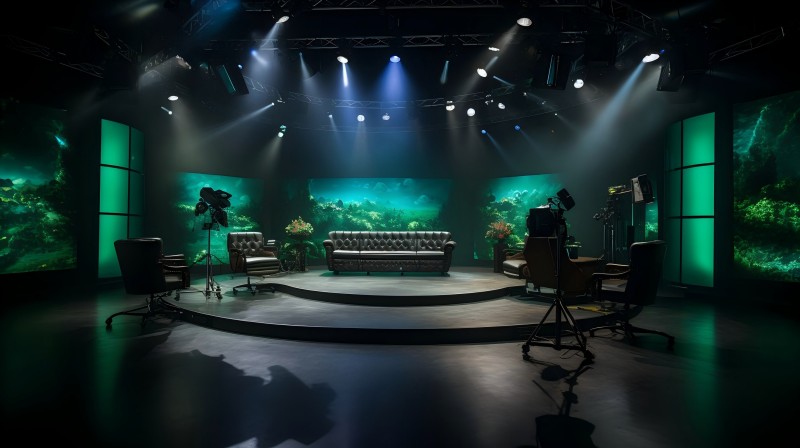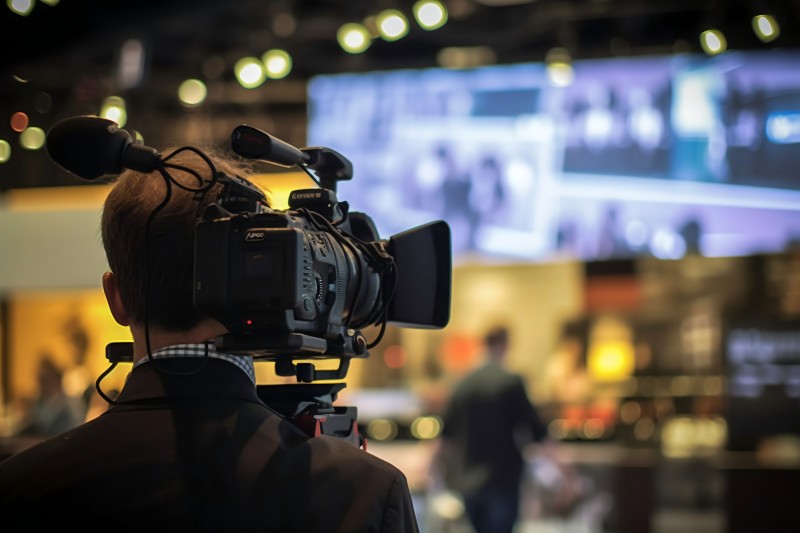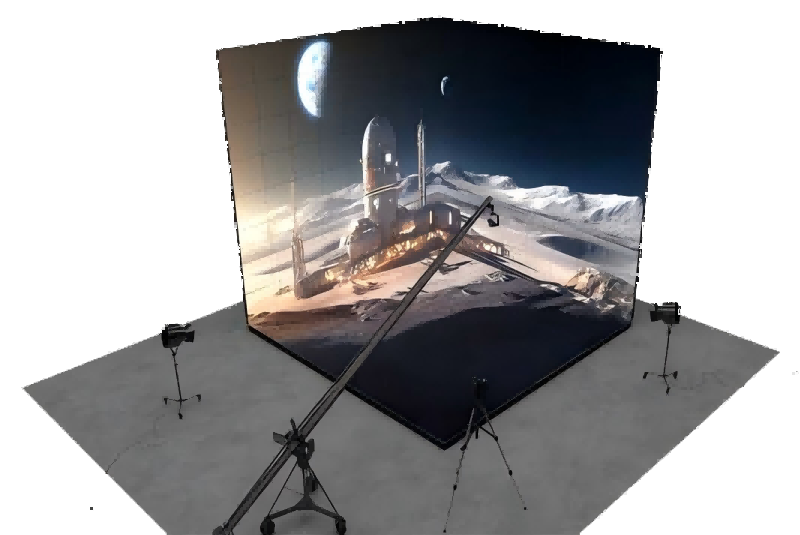Sansi LED: Sustainable LED Lighting and Integrated LED Display
Delivering premium and professional LED Display, LED Lighting, Smart City Integration solutions, trusted by over 60,000 companies worldwide everyday. From industrial lighting to commercial lighting, from outdoor advertising to XR & VR production, Sansi LED greatly improves the quality and sustainability of your business with 30 years of expert experiences.
With the advent of LED walls for virtual production, the film and television industry is witnessing a groundbreaking shift in production technology. This innovative technology is transforming the way content creators realize their visions, providing unprecedented flexibility, realism, and cost-effectiveness. In this blog, we will comprehensively explore the advantages, applications, and the future of this game-changing technology in virtual production.

What is an LED Wall for Virtual Production?
An LED wall is a large display composed of multiple high-resolution LED panels. These walls are used in film and television production as dynamic backgrounds, replacing traditional green screens and physical sets. By projecting computer-generated environments onto these walls in real time, filmmakers can create immersive and realistic backgrounds that seamlessly interact with actors and physical props.
Key Components of an LED Wall System
LED Panels: High-quality, high-resolution LED panels that form the foundation of the wall.
Processing Units: Powerful computers that render and process the virtual environment.
Camera Tracking Systems: Systems that monitor camera movements and adjust the displayed content in real time.
Content Creation Software: Tools like Unreal Engine or Unity used to create and manipulate virtual environments.

Advantages of Using LED Walls in Virtual Production
Enhanced Realism and Immersion
The realism provided by LED walls far exceeds that of traditional green screens. The ability to display lifelike environments in real time allows actors to interact more naturally with their surroundings, enhancing the believability of performances. The reflective qualities of LED panels also create accurate lighting conditions that further enhance the visual impact.
Real-time Adjustments and Creativity
One of the most significant advantages of LED walls is the ability to adjust virtual environments in real time. Directors and cinematographers can instantly modify lighting, weather conditions, or even entire scenes, fostering a more dynamic and creative filmmaking process.
Cost and Time Efficiency
Although the initial investment may be substantial, LED wall technology often leads to significant savings in post-production. Reducing the need for location shoots, set construction, and extensive post-editing helps streamline budgets and schedules, which is particularly important for television series and high-volume content production.
Improved Collaboration
LED walls facilitate better collaboration among various departments involved in production. Visual effects artists, cinematographers, and directors can make on-the-spot decisions and adjustments in real time, eliminating the need to rely on post-production fixes.
Expanded Creative Possibilities
With LED walls, filmmakers are no longer constrained by physical limitations or locations. They can create and explore a wide range of scenes with unprecedented flexibility, from alien worlds to historical settings, greatly broadening the boundaries of creativity.

Applications of LED Walls in Virtual Production
Film Production: Large-scale film projects showcase the tremendous potential of LED walls in creating extraordinary environments.
Commercial and Corporate Video Production: In advertising and corporate video production, LED walls enable quick turnarounds and the ability to showcase various virtual environments.
Live Broadcasts and Events: News programs, sports broadcasts, and live events are increasingly adopting virtual cinematography techniques to create backgrounds that can be updated in real time.
Virtual Reality and Augmented Reality Content: LED walls provide immersive environments for VR and AR productions, seamlessly blending physical and digital elements.
The Future of LED Walls in Virtual Production
As technology continues to advance, the future of LED walls is promising:
Higher Resolution and Brightness: Advances in LED technology will lead to more realistic and vivid displays.
Increased Affordability: As the technology becomes more widespread, costs may gradually decrease, making it accessible for smaller productions.
Integration with AI and Machine Learning: The introduction of smart systems will automate virtual production, further simplifying workflows.
Expansion into New Industries: Beyond entertainment, LED walls can play a role in education, training simulations, and architectural visualization.
Through these developments, LED walls will shape the future landscape of filmmaking and virtual production, providing creators with greater freedom and possibilities.
